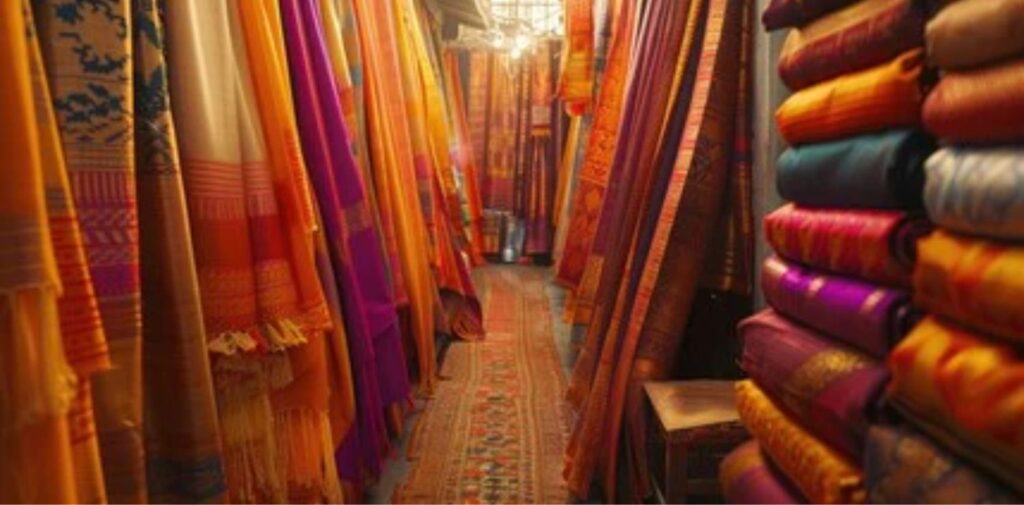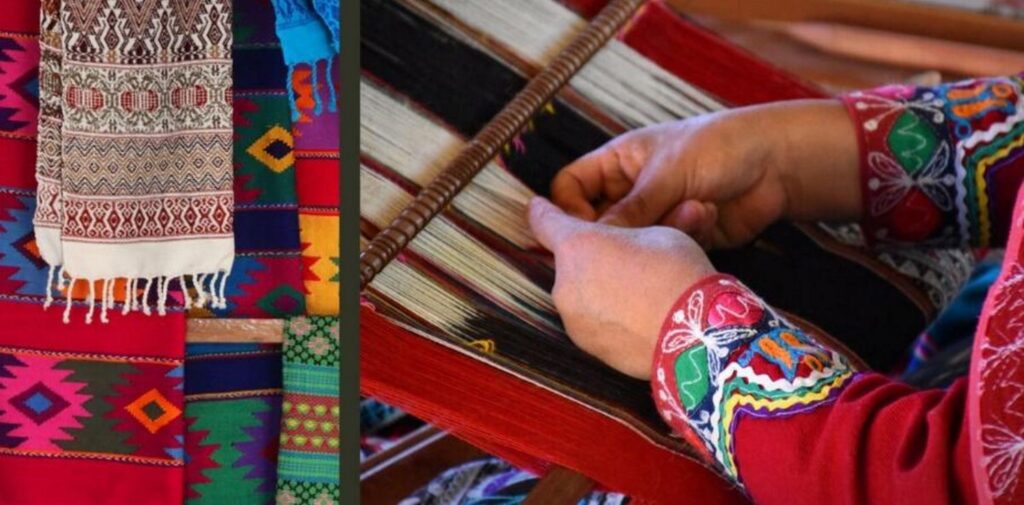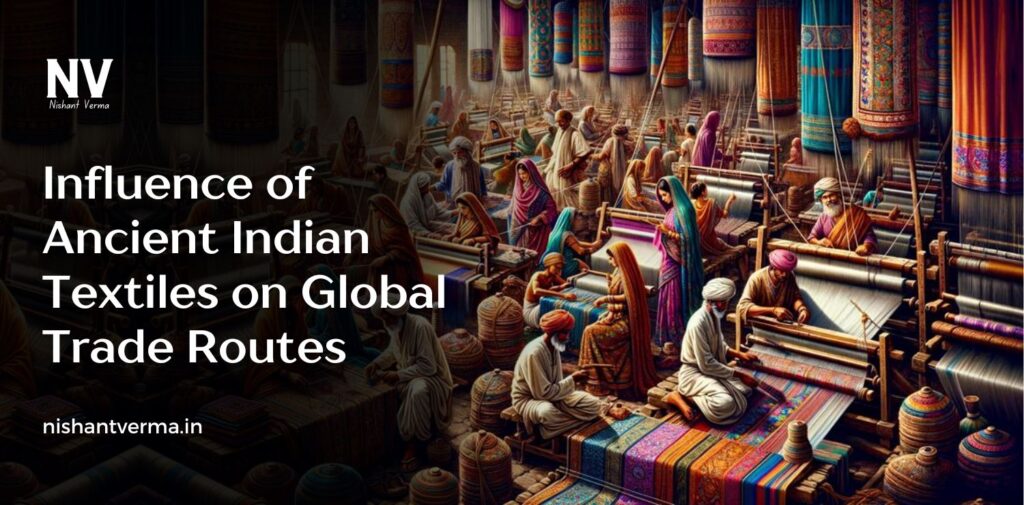India, with its rich cultural heritage, has long been known for its extraordinary textile traditions. From the fine muslins of Dhaka to the intricate silk weaving of Varanasi, ancient Indian textiles have played a significant role in shaping global trade routes. The beauty, craftsmanship, and uniqueness of Indian fabrics not only captivated local populations but also attracted foreign merchants and traders from across the world. This article explores the profound influence of ancient Indian textiles on global trade and how they became a major part of historical economic exchanges.
The Rise of Ancient Indian Textiles
India’s textile industry dates back to the Indus Valley Civilization, where evidence of weaving and dyeing has been found in the form of tools and fragments. By the time of the Maurya and Gupta Empires (around 300 BCE – 500 CE), India had developed an advanced textile industry, producing high-quality cotton, silk, and woollen fabrics. These textiles were not just used for local consumption; they were eagerly traded with regions far and wide.

Cotton and Silk: The Pillars of Indian Textiles
The primary materials that drove the success of Indian textiles in global trade were cotton and silk. India was one of the first countries in the world to cultivate cotton, and the quality of Indian cotton was unmatched. The soft, fine texture of Indian cotton made it a highly sought-after commodity. Similarly, India’s expertise in silk weaving, particularly in regions like Banaras (Varanasi) and Tamil Nadu, produced luxurious fabrics that found their way into markets across the globe.
- Cotton Textiles: India’s cotton textiles, especially muslin, became famous for their lightweight and soft texture. They were highly prized in the Roman Empire, and later in Europe, the Middle East, and Central Asia. These fabrics were so fine that they were often referred to as “woven air.”
- Silk Textiles: India was also known for its silk production, particularly the famous Banarasi silk. Indian silk became a symbol of luxury and was traded extensively along the Silk Road, reaching markets in China, Persia, and beyond.
The Role of Trade Routes in Spreading Indian Textiles
Ancient Indian textiles were not just a local phenomenon; they travelled far beyond the subcontinent, carried by well-established trade routes. These routes connected India to various parts of the world, facilitating the exchange of goods, culture, and knowledge.
- The Silk Road: One of the most important trade networks connecting India to the rest of the world was the Silk Road. This vast network of trade routes stretched from China through Central Asia, Persia, and into Europe. Indian textiles, particularly silk and cotton fabrics, played a key role in trade along this route. Merchants from India, Central Asia, and China exchanged goods, but it was the Indian textiles that left a lasting impression. The finest Indian cotton and silk fabrics became highly valued across Europe and the Middle East, influencing local textile production.
- The Indian Ocean Trade Route: While the Silk Road connected land-based regions, the Indian Ocean trade routes connected the maritime world. From the coast of East Africa to Southeast Asia, and from the Arabian Peninsula to the Indian subcontinent, merchants traded textiles, spices, and other goods. India’s coastal cities, including Gujarat, Kerala, and Bengal, became vital trading hubs for textiles. The Indian Ocean trade not only carried textiles to the distant shores of Africa and the Middle East but also facilitated the spread of Indian techniques in weaving, dyeing, and printing.
- The Roman and Byzantine Empires: The influence of Indian textiles reached as far as the Roman Empire. Roman traders imported fine muslins and cotton fabrics from India, and these textiles were in high demand among the Roman elite. The Byzantines, who inherited much of Roman trade and culture, also imported Indian textiles for their court and elite classes.

Influence on Local Textile Industries Around the World
The spread of Indian textiles did not just involve the exchange of finished products but also the transfer of knowledge. As Indian textiles made their way to distant lands, they inspired local industries and introduced new techniques of weaving, dyeing, and printing.
- Central Asia and Persia: Indian cotton textiles found their way into Central Asia and Persia, where they influenced local textile production. Persian weavers adopted Indian techniques and motifs, blending them with their own traditions to create unique textiles. Persian carpets and textiles, with their intricate patterns and vibrant colors, were heavily influenced by Indian designs.
- Southeast Asia: In Southeast Asia, Indian textiles were highly prized, especially in places like Java, Sumatra, and the Malay Peninsula. The Indian Ocean trade network facilitated the exchange of fabrics, which influenced local weaving traditions. Indian designs, such as block printing, were adopted and incorporated into Southeast Asian textiles.
- Africa: The Indian Ocean trade also brought Indian textiles to the eastern coast of Africa. In places like Zanzibar and Mogadishu, Indian cloth was highly sought after. African weavers adopted Indian techniques, particularly in the use of vibrant dyes and intricate patterns. Over time, African textile traditions began to reflect the influence of Indian designs.
The Impact on European Fashion
By the medieval period, the influence of Indian textiles had reached Europe. Indian fabrics, especially muslin, silk, and calico, were imported to Europe through the Middle East and the Silk Road. These textiles became highly desirable among the European elite and royalty.
- Luxury Goods: Indian fabrics were often reserved for the nobility and royalty in Europe. The softness and quality of Indian cotton and silk made them an essential part of royal wardrobes. Even in the Renaissance period, European artists depicted the opulence of Indian textiles in their paintings, highlighting the importance of these fabrics in European court culture.
- Textile Production in Europe: The high demand for Indian textiles eventually led European countries to try and replicate the fine quality of Indian fabrics. The process of weaving, dyeing, and printing became more advanced in Europe, inspired by Indian methods. This led to the establishment of textile industries in places like England, France, and Italy, although Indian textiles continued to dominate for many centuries.

The Decline of Indian Textile Trade and Its Legacy
The arrival of European colonial powers in India, particularly the British, brought significant changes to the Indian textile industry. The British East India Company began to dominate the textile trade, and Indian textiles faced stiff competition from industrialized European fabrics. By the 19th century, much of India’s traditional textile industry had been sidelined, and the import of cheap British textiles flooded the Indian market.
Despite the decline, the legacy of Indian textiles continues to influence global textile production. Many traditional techniques, such as block printing, tie-dye, and silk weaving, have been passed down through generations and are still practiced in India today. The rich heritage of Indian textiles continues to inspire fashion designers, artists, and artisans worldwide.
Conclusion
Ancient Indian textiles were not just a local product but a global phenomenon that shaped trade routes, influenced local industries, and left an indelible mark on world history. From the luxurious silks of Banaras to the delicate muslins of Dhaka, Indian textiles captivated the world with their craftsmanship, beauty, and quality. The legacy of these textiles can still be seen today in the global textile industry, reminding us of the profound influence that ancient India had on global trade and cultural exchanges.




